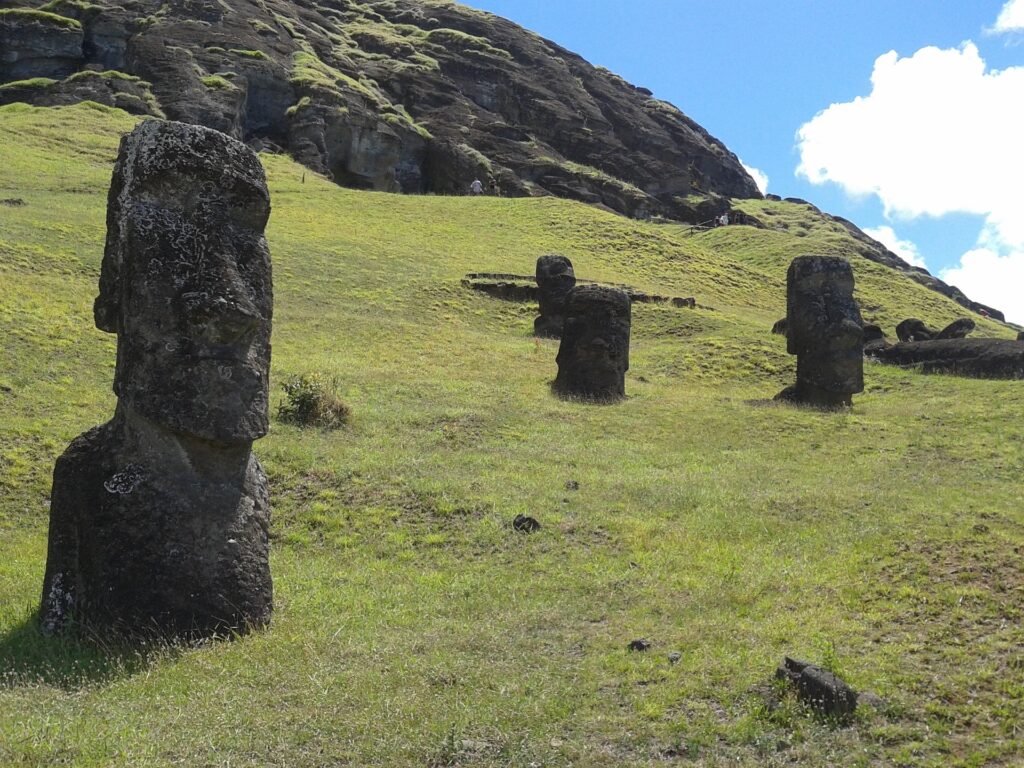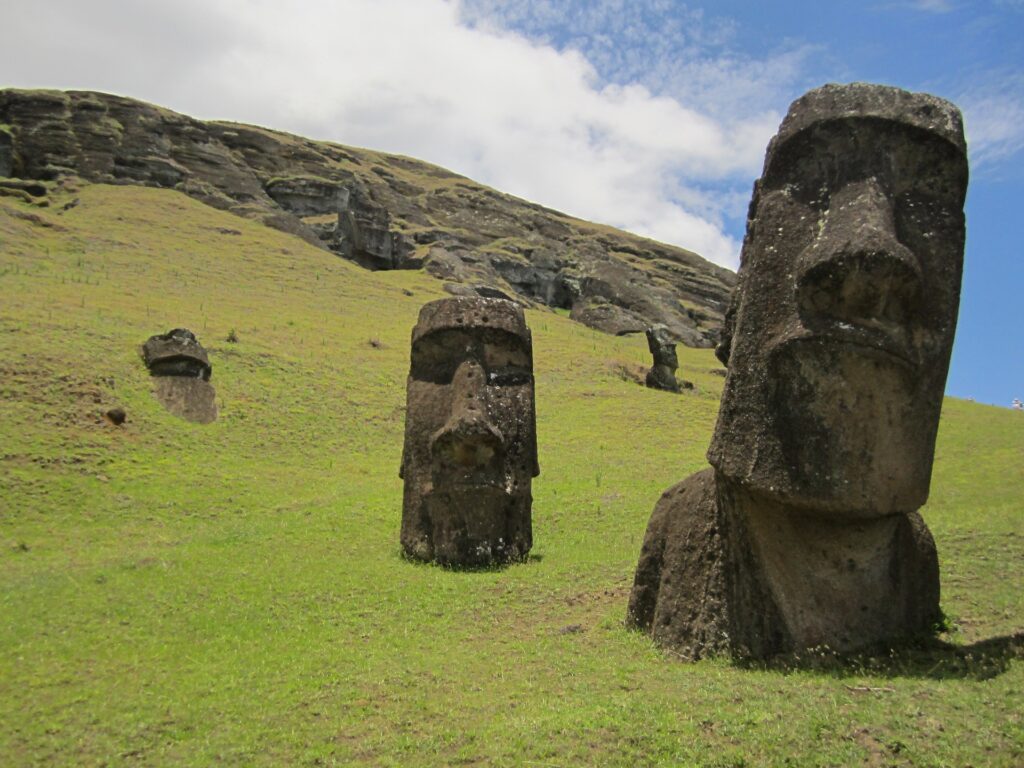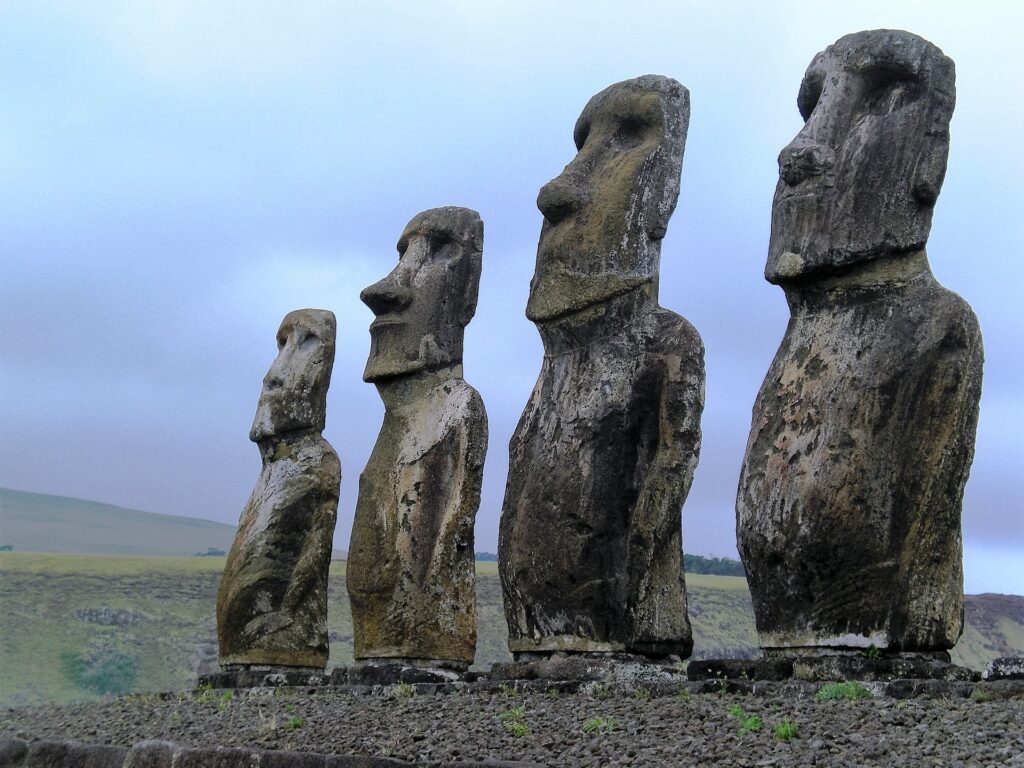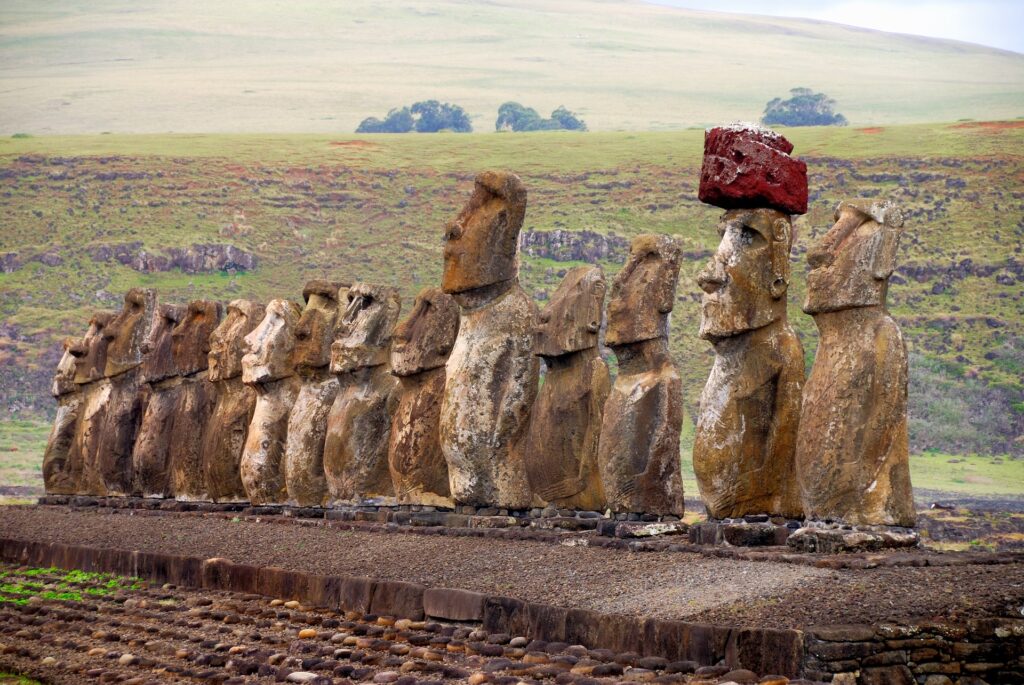Easter Island, locally known as Rapa Nui, is one of the most isolated inhabited islands in the world, lying approximately 3,700 kilometers west of Chile in the southeastern Pacific Ocean. Despite its remoteness, this UNESCO World Heritage site is globally renowned for its mysterious, iconic moai statues. These monolithic human figures, hewn from volcanic tuff, continue to captivate both scientists and visitors, fuelling a plethora of theories and intrigue about their origin and purpose.

The Polynesians, who are believed to have settled Rapa Nui between 700 and 1100 AD, are credited with crafting the moai. The island spans roughly 163 square kilometers and is dotted with nearly 1,000 of these enigmatic statues, varying in height from under a meter to an imposing 10 meters, with some weighing over 74 tonnes. Despite their different sizes, each moai follows a broad artistic canon: large heads, elongated ears, severe expressions, and robust torsos. They are often placed atop stone platforms known as ahu, which may have once served as tombs or ceremonial sites.
More:Read our another post Ciudad Perdida Trek, Colombia: An Immersive Journey
The primary quarry for the moai was Rano Raraku, a volcanic crater that provided the distinctive yellow-brown volcanic tuff. This site is a living museum of incomplete statues, giving insight into the islanders’ sculpting process. The technique appeared to involve carving directly into the rock face, allowing artisans to outline and detail the statues before detaching them. They sculpted each moai in a supine position, finishing the features last. Observing the numerous partly-carved moai at Rano Raraku provides a haunting glimpse into an era when these colossal figures were churned out with remarkable skill and efficiency.
Transporting such massive statues from Rano Raraku to various locations around the island, often several kilometers away, remains one of the island’s great mysteries. Various theories abound, from employing wooden sledges and rollers to a more recent and robust hypothesis suggesting that the statues might have been “walked” to their final destinations. This technique involved a complex system of ropes and coordinated pulling, allowing the statues to shuffle forward upright. Remarkably, experiments performed in recent years have demonstrated that it’s possible to move a moai using such methods.

The purpose behind the construction of the moai is another subject of much speculation and debate. The prevailing belief among researchers is that these statues represented deified ancestors who were thought to offer protection and prosperity to their living descendants. This theory is supported by the statues’ enigmatic gazes, which face inward towards the settlements, as if keeping watch over the people. A smaller number of moai face the sea, possibly emblematic of vigilance over maritime endeavors or as spiritual intercessors.
The creation and transportation of these monoliths required a highly organized, stratified society with advanced knowledge of engineering and a strong spiritual vision. It’s believed that as the moai-building endeavor became more grandiose, it might have contributed to social tensions and environmental degradation. The deforestation of Easter Island, likely exacerbated by the extensive use of trees for transporting statues, led to soil erosion and diminished the island’s capacity to support its population. This ecological strain possibly culminated in societal disruptions, including shifts in power dynamics and resource scarcity.
European contact in the 18th century further impacted the islanders. Dutch explorers led by Jacob Roggeveen, who arrived on Easter Sunday in 1722, were the first recorded Europeans to encounter the island. They named it Paaseiland (Easter Island). Subsequent visits by Europeans and the introduction of diseases, enslavement, and cultural disruptions significantly affected the Rapa Nui people.

Efforts to unravel the mysteries of the moai continue through various scientific and archaeological endeavors. Using technology such as ground-penetrating radar, researchers have discovered that the statues are much larger than they appear, often extending several meters underground. The buried sections reveal intricate petroglyphs, indicating that the islanders bestowed great care on the parts of the statues that would ultimately be hidden.
Additionally, depictions of the moai wearing cylindrical stone hats, known as pukao, add another layer of complexity. Carved from red scoria, these hats might represent the topknots worn by high-ranking individuals or served as a form of increased spiritual potency. The process of positioning these heavy pukao atop the towering statues remains another subject of curiosity, offering a window into the islanders’ sophisticated construction techniques.
Contemporary Rapa Nui culture is a harmonious blend of ancient Polynesian traditions and Chilean influences. Annual festivals like Tapati Rapa Nui celebrate the island’s heritage through music, dance, and traditional sports, keeping the ancestral spirit alive. The island’s tourism predominantly revolves around the moai, with visitors flocking to sites like Ahu Tongariki (which features 15 re-erected moai) and Rano Raraku. These visits foster appreciation and continued interest in preserving both the statues and the broader cultural landscape.
More: Wanted to download Odisha Magazines, visit here
The Rapa Nui National Park, encompassing many key archaeological sites, plays a crucial role in the preservation efforts. Managers balance the influx of tourists with the need to protect the fragile environment and cultural heritage. Engaging the local community in these conservation activities is vital, ensuring that tourism benefits are distributed and cultural integrity is maintained.

In summary, Easter Island, with its ethereal moai statues, stands as a testament to human ingenuity, spiritual depth, and resilience. These monolithic figures, more than mere stone, are silent storytellers of a civilization that flourished against the odds in one of the planet’s most remote corners. The mysteries surrounding them—be it their creation, transportation, or purpose—invite ongoing exploration and contemplation. They serve as enduring enigmas wrapped in the serene isolation of Rapa Nui, continually drawing the curious and the scholarly to their shores.
FAQ For Explore Easter Island (Rapa Nui)
What is Easter Island known for?
Easter Island, also known as Rapa Nui, is famous for its gigantic stone statues called Moai, created by the Rapa Nui people. These mysterious statues are scattered across the island and are a major draw for visitors.
How do I get to Easter Island?
The most common way to reach Easter Island is by air. The Mataveri International Airport on the island receives flights from Santiago, Chile. It’s important to note that due to its remote location, air travel is the only practical means to reach the island.
When is the best time to visit Easter Island?
The best time to visit Easter Island is during the island’s summer, which is from September to April. During these months, the weather is generally warmer and drier, making it ideal for exploring the outdoors and enjoying the island’s beaches.
What are the must-see attractions on Easter Island?
Beyond the iconic Moai statues, visitors to Easter Island should also explore the volcanic craters, beautiful beaches, and the ceremonial village of Orongo. Additionally, the island has a unique Polynesian culture and history that’s worth experiencing.
Are there any restrictions for visiting the Moai statues?
While visitors can freely view many of the Moai statues from designated areas, there are certain sacred sites that are off-limits to tourists. It’s essential to respect all signs and guidelines to preserve both the statues and the island’s cultural heritage.

